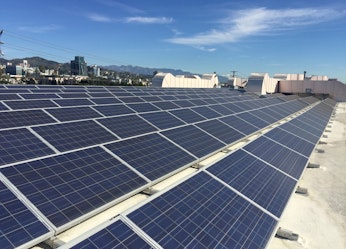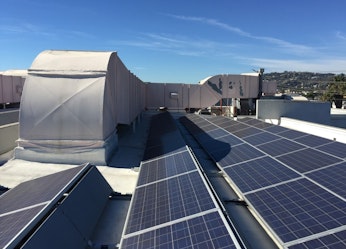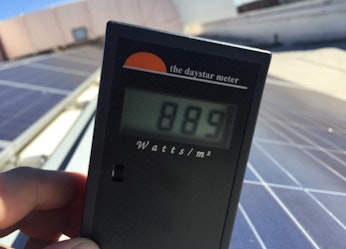

M|O Perspectives
Check back here for our thoughts on the latest developments in our industry.
Budget or premium: An array of options for tomorrow’s solar systems
May 05, 2017
The U.S. solar market is anticipated to triple within five years as utility-size installations move forward. It’s no wonder. As one of the few capital improvements that can directly lower or offset a property’s operating costs, photovoltaic (PV) solar systems are a powerful investment.
In many municipalities codes now require that buildings be ready to accept PV installations, and it’s not inconceivable that the future may bring mandatory integration of PV systems, including panels, into building construction plans.
This trend presents both challenges and opportunities. For example, there is a potential for aggressive tax reform by the current administration, which could involve a reduction or removal of solar tax credits, directly affecting the return-on-investment period. Additionally, with utility company changing policies frequently, properties integrating or upgrading PV must plan intelligently for a truly dynamic solar landscape.
On the flipside, opportunity abounds as project hard/material costs continue to improve due to a surplus of PV modules created by sagging demand in China, coupled with significant new manufacturing capacity.
Solar on a budget
If your top priority is budget and your property has a large flat roof, you may not need to pay for the premium PV panels, which can be upwards of a 30% cost premium. You can afford to generate less power per square foot because you may have sufficient roof area to add more budget-friendly poly-crystalline panels in the future.
Marx|Okubo recently worked on a project of this nature. A 210-kilowatt PV array consisting of over 1,110 modules was built ten years ago on a noteworthy, historic property in California. The poly-crystalline array was dirty, showing signs of age and was installed with several design inefficiencies.
The original design and installation vendor was the low bidder—and no longer in business. As such, we were not able to pursue warranty claims or technical troubleshooting with the original vendor. However, after performing a field and system performance analysis, Marx|Okubo identified several areas of potential upgrades. We are currently working to guide the new owner on managing operations and maintenance responsibilities, and planning for smart system upgrades in the future.
Go premium for performance
If your top priority is performance, or space is limited, you’ll want to maximize your generated power per square foot. That means buying premium (mono-crystalline) modules but getting notably better quality in the process.
In the premium solar category, Marx Okubo is currently working as the owner’s representative on a campus-style development. The property has been designed for peak performance, with a 366-kilowatt PV array consisting of over 1,100 mono-crystalline, high-efficiency modules oriented at an optimal tilt and azimuth. Matching the client’s long-term lifecycle strategy for the property, the premium panels and engineering decisions represent 57% more anticipated production in comparison to the budget system above.
Whether you’re on a budget or can afford to maximize your property’s performance, it’s important to find a firm that can help you navigate the solar system.



What we do.
- Owner's Representation
- Property Condition Assessment
- Project Management
- Constructability Reviews
- Repair | Reconstruction
- Facility Condition Assessment
- Construction Loan Monitoring
- Accessibility
- Building Enclosure
- Fire | Life Safety
- Mechanical | Electrical | Plumbing
- ESG | Sustainability & Resiliency
- Structural Engineering
- ASAP® - Automated Structure Alert Program
Marx|Okubo is a national architecture/engineering/construction consulting firm that works with real estate owners, investors and lenders—at every point of the property lifecycle—to evaluate their building projects, solve complex challenges and implement tailored solutions. We help clients understand their projects’ complexities, so they can make more informed decisions and, ultimately, mitigate their risk.




